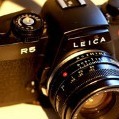60mp Rangefinder - Honest Opinions
-
Recently Browsing 0 members
- No registered users viewing this page.
-
Similar Content
-
- 15 replies
- 576 views
-
- 9 replies
- 189 views
-
- 9 replies
- 749 views
-
- 4 replies
- 465 views
-
- 7 replies
- 370 views
-




Recommended Posts
Join the conversation
You can post now and register later. If you have an account, sign in now to post with your account.
Note: Your post will require moderator approval before it will be visible.